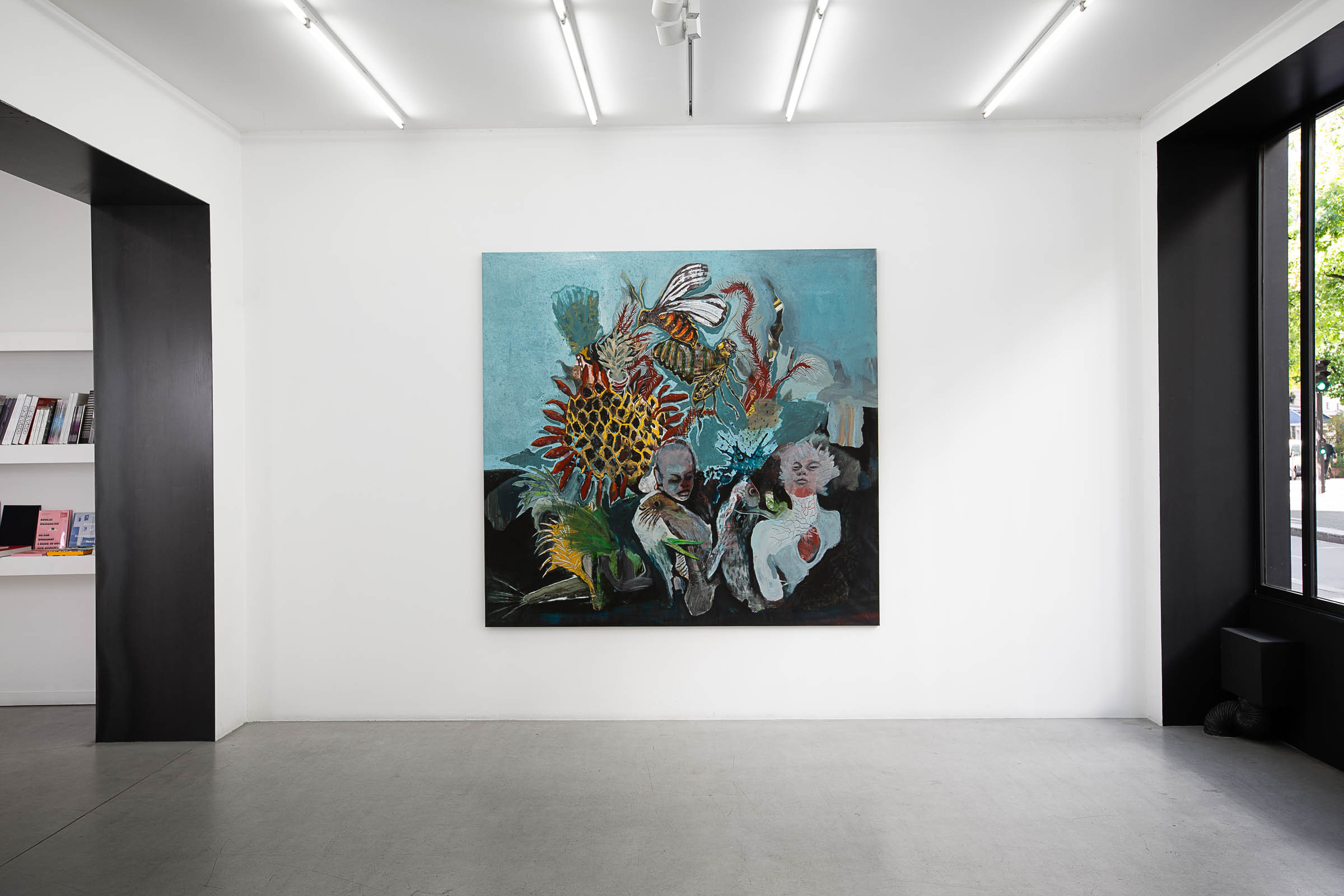What is a root?
This ancient word, derived from the Latin radix, first designates what ties the living being to the earth. It is the invisible yet vital organ, the one through which the plant draws its sap, its anchorage, its memory.
PARIS-B is delighted to welcome the artist Souleimane Barry for his first solo show, entitled “Racines”.
What is a root?
This ancient word, derived from the Latin radix, first designates what ties the living being to the earth. It is the invisible yet vital organ, the one through which the plant draws its sap, its anchorage, its memory.

But beyond the plant world, the root is also a universal metaphor: it speaks to our origins, our sense of belonging, and the silent transmissions we carry
In this new series of paintings, Souleimane Barry explores roots in all their polysemic richness. He questions the interdependence of the living, the force of natural cycles, but also the fragility of our fundamental bonds—to nature, to the earth, to our histories. His figures, always suspended between appearance and disappearance, seem to emerge from an ancient soil, from a shared humus. Their gestures, gazes, and postures evoke both anchoring and passage.
Racines is not a return to origins, but a search for living anchorage. The painter dives into the depths, not to retreat,
but to bring forth a burning present — one marked by uprooting as much as by the desire to reconnect in a shared
world.
In nature, nothing grows without a subterranean system. A root is not merely the past: it is an active structure, a condition for growth. It connects the being to the soil as much as to a dynamic.
Édouard Glissant, for his part, proposed another conception: the root not as unique, vertical, anchored “at the bottom of a single soil,” but multiple, shifting, in network. His “rhizomatic roots” do not oppose the Other, do not arm themselves against the outside, but mingle, branch off, intersect. They establish a relational, open, creolized identity.
As Simone Weil wrote in The Need for Roots, “the most important and most unknown need of the human soul” is precisely that of having roots. According to her, man, deprived of this vital link, becomes vulnerable to all forms of drift—political, moral, existential. But these roots are not conservative: they give strength, resistance, density, allowing us to inhabit the world with intensity.
In Souleimane Barry’s work, this idea courses through the material itself. His figures seem to spring from a common soil, saturated with memory, silence, and ancient gestures. They are traversed by the sap of the world—that which binds insects to flowers, humans to the seasons, water to bodies. Racines is also a pictorial ecology: a world where each thing is held by what connects it, where nothing grows alone. For in reality, everything earthly has its roots: in the soil, in the air, in others. Art too.
For Barry, roots are not merely a symbolic motif: they incarnate themselves in the very substance of painting. The artist mixes water and oil, diverts traditional principles of compatibility, brings together what normally repels. The result is unprecedented textures, vibrating skins, fertile accidents, as if the canvas itself became a living organism, traversed by opposing forces.
Barry makes opposites converse, provokes tensions, lets unstable organic forms emerge, as if from a soil in mutation. His surfaces thus become the grounds of a pictorial germination: a humus where vegetal, animal, and human realms coexist, where deep memories echo with the contemporary. Like roots, his gestures connect, irrigate, infuse—sometimes barely visible, but always at work beneath the surface. Each canvas becomes a place of passage, of slow transformation, where something seeks to grow. To be reborn.
In a world that is coming undone, Racines invites us to re-tie bonds. To slow down. To look at what still connects us. And perhaps to relearn how to grow together.
Born in 1980 in Burkina Faso, Souleimane Barry is a painter based in France. His native Africa, his roots, and his relationship with nature form the foundation of an experimental pictorial practice. He received training in various experiences, including the calligraphy workshop of Bobo-Dioulasso and a workshop for hand-painted commercial signage, which helped him develop his eclectic style. Several drawing and painting programs in Burkina Faso also enabled him to refine his technique.